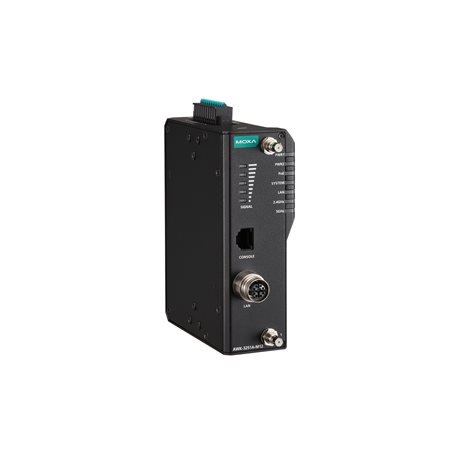
Click “WhatsApp Us” or “Get a Quote” above to buy AWK-3251A-RCC from APulsar Technologies, MOXA official distributor.
In stock. Purchase walk-in from our office in Petaling Jaya, or order online and enjoy fast delivery across Kuala Lumpur and the entire Malaysia.
The AWK-3251A-RCC Series industrial wireless AP/client is designed to meet the growing need for faster data transmission speeds through IEEE 802.11ac technology. The Auto Carriage Connection (ACC) feature enables easy deployment of wireless devices and increases the reliability of wireless carriage backbone networks. The AWK-3251A-RCC Series is also optimized for passenger Wi-Fi services and supports up to 120 client connections. The AWK-3251A-RCC Series complies with sections of the EN 50155 standard specifications covering operating temperature, power input voltage, surge, ESD, and vibration, making the product suitable for a variety of industrial applications. The AWK-3251A-RCC Series can be powered via PoE to facilitate flexible deployment and can operate concurrently on both the 2.4 and 5 GHz bands in AP mode.
Seamless roaming with client-based Turbo Roaming for < 150 ms roaming recovery time between APs (Client Mode)
AWK-3251A-RCC US Models Only:
AWK-3251A-RCC UN Models Only:
Available channels change depending on the selected country or region code.
2.4 GHz:
5 GHz:
Apulsar.com uses cookies to ensure you get the best experience. By continuing to browse, you agree to our use of cookies. Our privacy policy available here